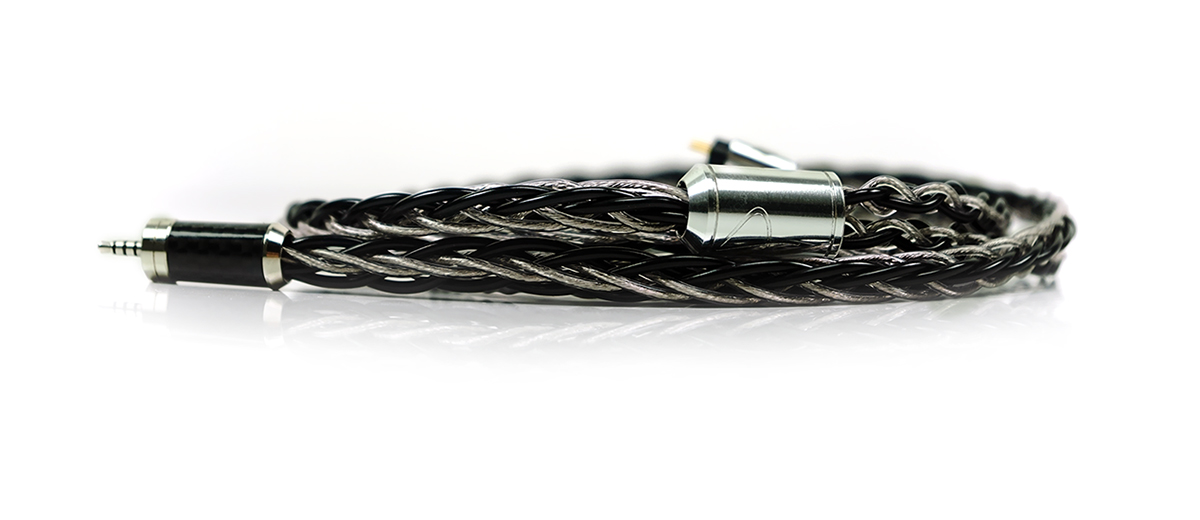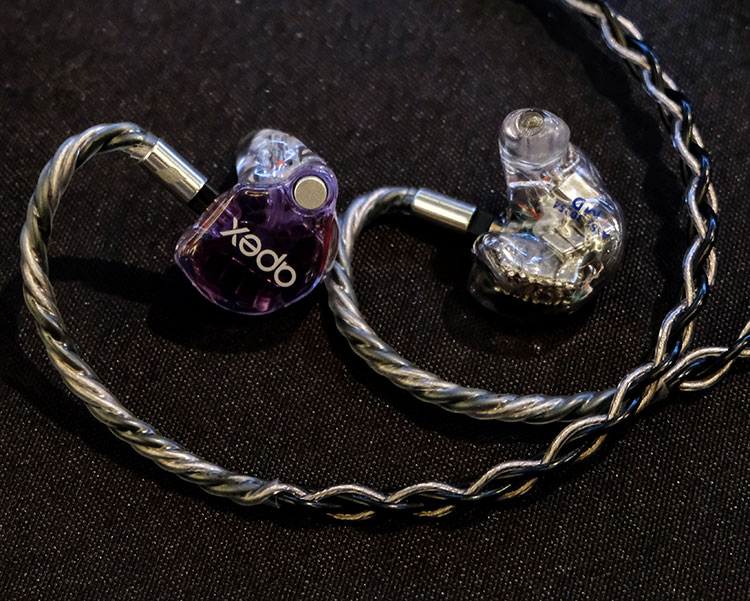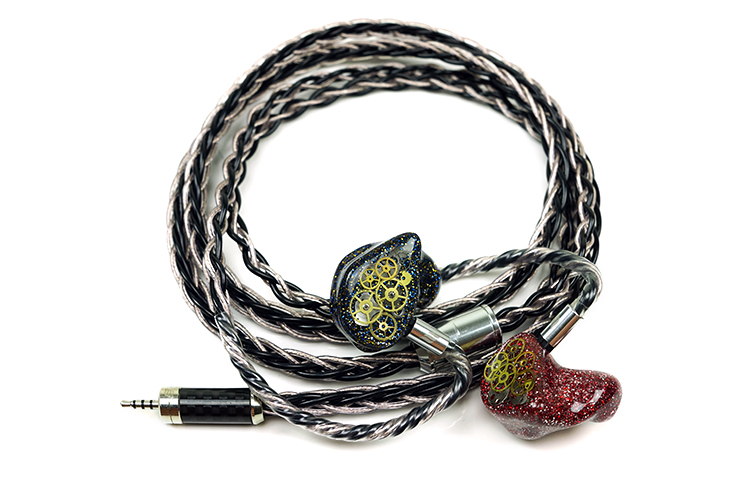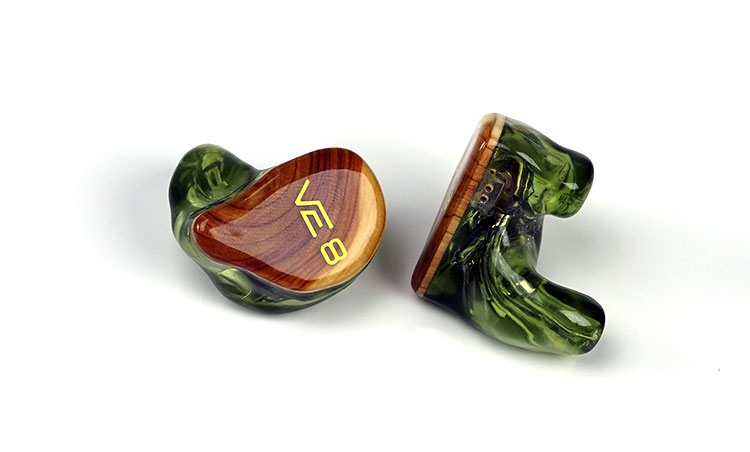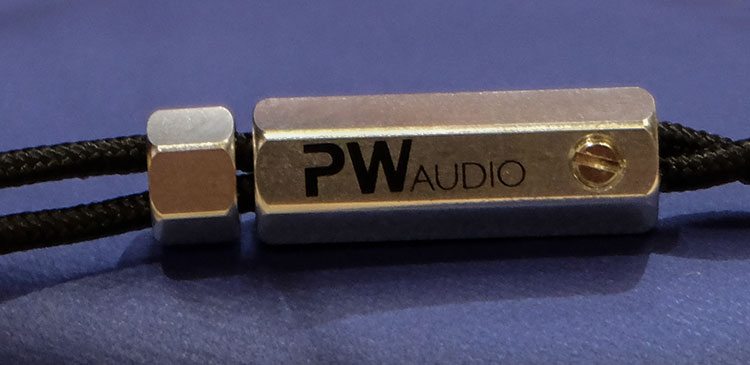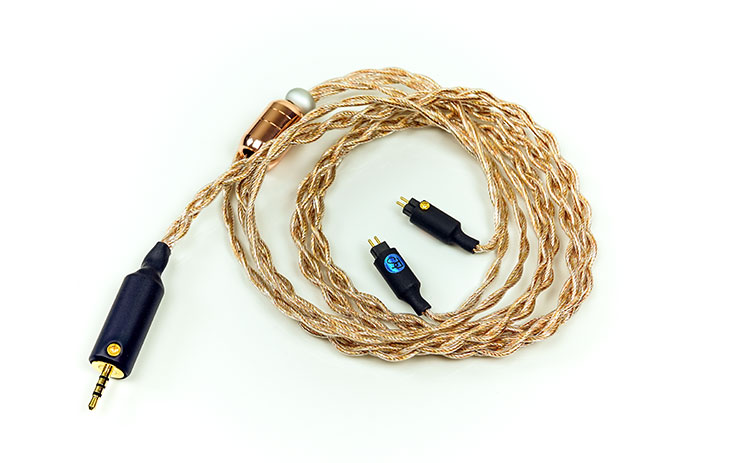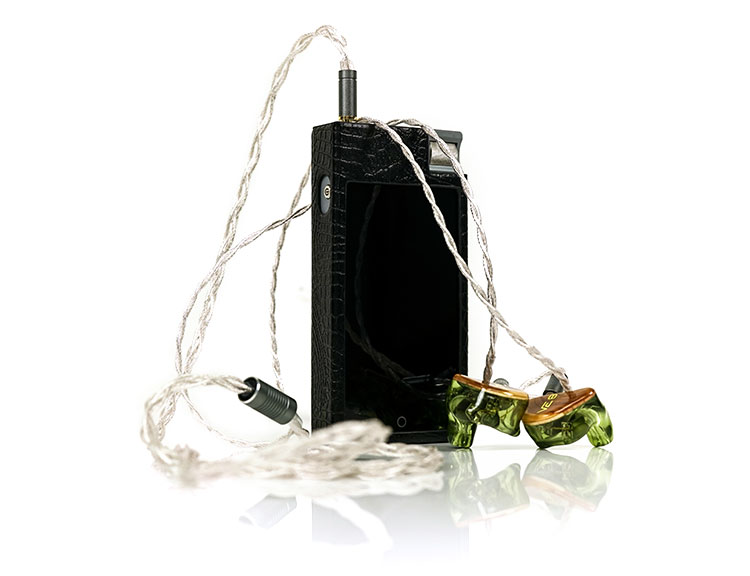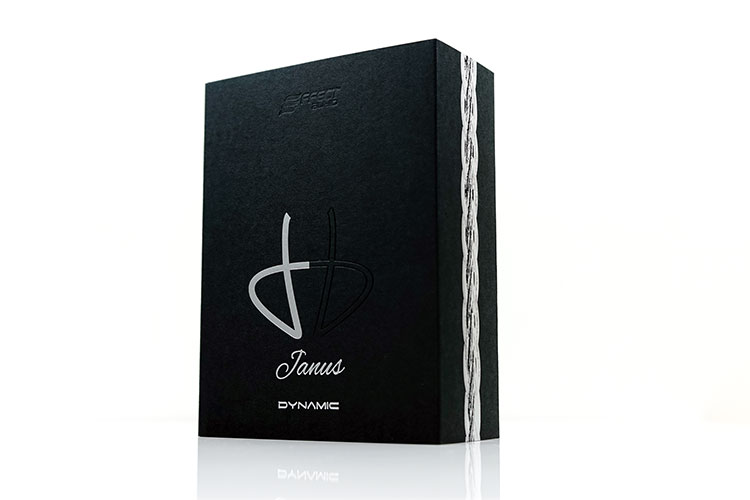Sound Impressions
The 8-Wire “Effect”
If you already have a monitor that is fairly neutral or with a slight midrange emphasis such as our review test sample, the Westone ES80, then the Janus Dynamic is going to do special things that a stock cable can only dream about.
Moving from 4-wire to the Janus Dynamic 8-wire will already open up any monitor to a massive increase in dynamic range and thus a better appreciation of detail. You will instantly hear a much snappier and more engaging low-end with a far superior level of instrumental headroom.
Going 8-wire will also open up the mids far better than any 4-wire, (unless tuned otherwise). They will make those stock OFC 4-wire cables you often get with customs sound positively compressed and boring sounding. However, there is much more to the Janus than simply doubling the core count.
The Janus Dynamic Focus
For me, the Janus has an almost unique capability in terms of fine-tuning any capable IEM’s midrange into one of the most intricate, tonally pleasing, and engaging presentations I have yet to hear in a cable to date.
However, in getting there, the Janus has less of a focus on the traditional common denominators that always grab our immediate attention. Parlor tricks such as a healthy infusion of bass solidity and impact or a cleaner sparkling treble are all kept somewhat in the box. It will not exude that thick and heavy-handed sound of some 8-wire all-copper cables.
Instead, the Janus delivers on a lot of subtle areas that I personally look for in a good quality IEM presentation these days. These include imaging, separation, and most of all a natural to slightly rich-sounding instrumental and vocal timbre.
I mentioned earlier that during my discussion with EA I asked what it was they wanted for the Dynamic version of the Janus and they mentioned a more traditional Hi-Fi sound than anything else. Owning a 2.1 upstairs in our Hi-Fi room I would say that description is not far off the truth although it will depend on the monitor you use.
Bass
The Janus Dynamic actually has a slightly warm and liquid-sounding low-end response. I say this in context to alternative cables with either a similar pricing or gauge such as the PW Audio 1960s which is punchier sounding or the entry-level 8-wire 24AWG OC Studio Orpheus MK5 which is much thicker and darker sounding.
However, if you are coming from a stock 4-wire OFC Plastics One stock cable the Janus D. is going to sound weightier, far more open, and definitely deliver a fantastic upgrade in dynamic range.
It is not that the Dynamic is lean sounding or lacking in texture or detail for a TOTL cable. Far from it, simply it comes across as a little more relaxed and smoother sounding than the two mentioned cables. Again, the focus is taken slightly away from typical copper traits such as outright density which, to be honest, is something EA has never purposely gone for in their copper mixes.
Instead, the Janus Dynamic delivers some really excellent bass layering. The sound is slightly even harmonic dominant with a very nice balance between sub-bass impact and mid-bass warmth. Some cables go for a lot of ‘boom and thud’ at the cost of some warmth and essential upper bass clarity.
Not so with the Janus Dynamic. It is impressively coherent sounding throughout and not once do you feel it overshadows its all-important midrange strengths.
Mids
It is all about the width and instrumental separation combined with a very likable timbre. I personally think this is the calling card of the Janus Dynamic.
If you have a mid-range champ already it is going to sound superb paired with the Janus D. If you have thinner sounding midrange performers but with excellent detail such as the 64 Audio A18, then the Janus Dynamic will do an excellent job of “riching” up the mids without losing that detail.
The tone is natural to slightly euphonic sounding throughout for both instrumental and vocal timbre. It is a continuance of that liquid low-end in some parts but with a little more upper harmonic balance so overall a sweeter sound to my ears than say the Thor II or the PW Audio 1960s (2-wire).
Vocals are centered and ever so slightly forward sounding but not hugely so. The spacious soundstage and excellent imaging of the Janus D allow vocals to sound quite clear. They also retain that same pleasing euphonic overtone that seems to be a hallmark of the Janus Dynamic’s presentation.
Treble
Nothing dark here with the Janus treble performance. However, neither is it neutral nor bright sounding. It is really in keeping with that euphonic and natural to rich tone throughout. I am impressed as always with EA’s ability to maximize the level of sparkle in their copper wiring and the Janus Dynamic is no different in that respect.
From aural memory, the Basso version may have a little more top-end presence and sound the airier of the two but it has been a while since I heard them both so take that “recall” with a pinch of salt.
It is a touch smoother and not quite as hard sounding as the 19060s top-end though which I tend to find a little more neutral in tone. I do find it airier and cleaner sounding than the Plussound Exo Tri-Copper top-end which sounds a little more laid back to me and not quite as open sounding.
Synergy
Ultimately it depends on your preferences and what monitor you are using. From my own point of preference, the Janus Dynamic teases out a smoother, sweet-sounding midrange that gels superbly with monitors that I already believe to have fantastic mids. Two great examples worth mentioning are the Empire Ears Phantom and the Vision Ears VE8.
Empire Ears Phantom/Ares II
You have to be living under a rock to not hear the whispers that the Janus D pairs very well indeed with the Empire Ears Phantom and there is some truth behind that. The Phantom comes with the EA Ares II cable which is already a smart move by both companies to avoid the Plastics One compressed OFC sound.
Tonally, the Ares II is in the same ballpark as the Janus Dynamic with a smooth and relaxed tone but there is some marked difference on the technical and staging level that shows off the Janus D as the superior choice for the Phantom. Mind you, the Ares II is $160 so none of this should come as a surprise but if you do own a Phantom you owe to yourself to try this pairing.
4 to 8-wire
The Ares II is still a 4-wire though so immediately pairing the Janus D 8-wire to the Phantom you get a big jump in dynamic range and a far more vivid and involving soundstage. That superior dynamic range means nuanced or micro-detail will be a lot more noticeable on the Phantom.
You also get a much more open-sounding midrange with convincing instrumental separation and plenty of room for vocals to breathe.
Beyond that, the Phantom’s treble extension and sparkle are clearer and airier than the stock Ares II’s more intimate performance. The harmonic balance is also better on the Janus because of the superior treble presence and slightly sweeter tone overall.
From string plucks to percussion passages you just get a sound with this pairing that is more refined than the stock alternative.
Vision Ears VE8/Stock OFC 4-wire
Oh wow, (technical audiophile term), what a transformation over the bland Plastics One stock cable that comes with the VE8. The stock OFC 4-wire is smooth enough but it is so bland and compressed sounding you never get a hint at what the VE8 really can do.
Step forward to the Janus Dynamic and listen to how much better the harmonic balance is, particularly on that previously neutral midrange positioning the VE8 stock cable delivers. Vocals have much better focus and sound more forward, instrumental clarity is a huge step up in terms of presence and detail and yet it still retains that lovely sweet timbre.
The only checkpoint is the sub-bass presence. The VE8 is known for plenty of sub-bass rumble and power. Other competing cables will give you more of that. The Janus Dynamic/VE8 pairing dials it down just a little in comparison but honestly, it sounds all the more balanced for it.
Select Comparisons
PW Audio 1960s (2-wire)
SG$1399
Technical
The 1960s 2-wire is one-half of a duo lineup of one of Peter Wang’s (PW Audio) flagship cable creations. The other is what most describe as a more full-bodied 4-wire version. It is perhaps unusual to hear of a 2-wire cable in an industry used to 4 and 8 wire but in actual fact, the 2-wire has 4 conductors inside.
The 1960s is a 26 and 24AWG OCC copper Litz construction that uses a mix of Teflon for the 2 positive conductors (26), and PVC for the 2 negative conductors (24) wrapped in an outer nylon jacket.
This is a fairly lightweight construction, very slim and quiet in terms of microphonics. Certainly, a lot smaller and lighter in physical size than the 8-wire 23AWG Janus D which some might prefer or find more comfortable.
That is its physical advantage. Visually, it is not quite as physically striking as the Janus D. with a simpler plain black twisted cloth jacket compared to the elaborate tightly wound two-tone braid of the Janus D.
Performance
To be honest I am blown away by the 1960s 2-wire performance in terms of how powerful sounding a 4-conductor wire can actually get. It sounds almost on par with 8-wire builds in terms of holographic soundstage and releasing the potential dynamic range in any monitor.
It is a class above other 4-conductor wires, at least the ones I have tested before so I can understand why it’s priced higher than over 4-wire variants.
Both of these cables play slightly to the warmer side of things rather than stay neutral or analytical sounding to the source. If you are considering this or the Janus Dynamic then there are some differences in how they perform that you do need to take into account.
Differences
The first is the low-end. Take, for example, the Westone ES80 pairing using the Janus D and the 1960s 2-wire. The 1960s will deliver a heavier hitting low-end with more sub-bass presence and punch compared to the Janus D’s more liquid but linear sounding low-end. If you need a bit more bass prominence and sub-bass power then the 1960s is going to be a good choice here.
However, once you move into the mids that sweeter tone and better separation on the Janus D takes prominence. The 1960s 2-wire mids harmonic balance is a little harder-edged, especially in the upper mids/lower treble.
Percussion timbre is a little more fatiguing on the 1960s 2-wire than the Janus Dynamic, especially with brighter sources. The Janus Dynamic has a more natural sound to its timbre right up into the top-end making it the more forgiving of the two in that respect.
The 1960s also sounds a touch narrower in its staging than the Janus D. especially when the low-end on the Westone ES80 gets a little busy. Vocals tend to take a slight back seat and you get marginally more of a congested mid-bass and lower-mids sound with the 1960s 2-wire.
PlusSound EXO Tri-Copper
$599
Technical
The Tri-Copper does come in an 8-wire which we would have loved to have compared but sadly not to be. This is the EXO 4-wire version but it is a very good cable nevertheless. The Tri-Copper uses a very good quality 26AWG Type 6 Litz configuration and a mix of UP-OCC copper, silver-plated copper, and gold-plated copper all in a single wire.
This is a lighter cable due to the use of 4-wire as opposed to 8-wire and a smaller gauge of 26 compared to the Janus Dynamics 24. The Tri-copper also uses a PVC jacket so it is just as soft, pliant and microphonic-free as the Janus D.
You will find the Tri-Copper to be physically the smaller of the two and perhaps slightly more comfortable around the ear as a result. Simple physics here.
The aesthetics on the Tri-Copper are just as bold though not quite as intricate simple because there is less wire here to separate out. You do not get the two-tone of the Janus D but you can get a wide variety of color combinations for the Tri-Copper.
The one in the pic is a striking mix of copper and rose gold but there is also wood, silver, chrome, carbon fiber to name but a few. I believe the Janus color and finishing schemes are largely fixed at this point.
Performance
The Tri-Copper has a more traditional copper sound than the Janus Dynamic. It is a little denser sounding with more sub-bass presence and power. The Janus Dynamic swaps low-end power for a subtler balance in its low-end layering so whilst it is not as thick or powerful it is more expressive and lively sounding.
The Tri-Copper has a darker sound overall with slightly less midrange width and a more muted treble response that is not as airy or lively as the Janus D’s signature. The Janus Dynamic’s top-end extension has more sparkle and presence and certainly a bit more headroom.
The harmonic balance is really sweet and rich versus darker and weightier with these two cables. Both are fairly forgiving cables so pairing with pretty much any monitor will work.
However, to maximize the Tri-Coppers strength I would pair this with the likes of the A18 or the Katana just to fatten those two up a bit. The Janus Dynamic’s more natural timbre and airier tone work much better with smoother-sounding monitors such as the VE8 and Phantom.
Astral Acoustics Libra
$520
Technical
The Astral Acoustics Libra is the HK-based company’s flagship cable. It is composed of type 2 silver-gold alloy Litz with a gauge rating of 25AWG and can come in either 4-wire or 8-wire builds depending on your preference starting at $520.
The Libra is also jacketed with a similar PVC material so it is quite soft, pliant, and easy to work with. The braiding, however, is a little flatter and looser than the EA cables and I prefer to see tighter braiding on cables. The Libra has a nice clean shimmery look but doesn’t quite convey the same “wow” factor of the two-tone tight braided cable of the Janus.
The terminations on the Libra are very good. In fact, I prefer the 2-pin Eidolic barrels over EA chrome 2-pin barrels, to be honest. They feel sturdier and less prone to slippage with glue issues.
The new y-split barrel on the Janus is much “sexier” than the Libra gunmetal Ediolic version though a touch heavier. The signature engraving gives the Janus y-split barrel a far more premium bespoke look.
Performance
The Libra is aiming for a similar tone and timbre but it is a bit more relaxed sounding than the Janus Dynamic. Paired with a VE8 or the Phantom both deliver a much better performance than the stock cable with a much sweeter smoother sounding timbre.
The key difference is the level of texture from the mid-bass up to its lower mids of the Libra which is slightly thinner sounding and the imaging which is a little more passive compared to the Janus Dynamic.
Whilst neither are bass dominant the Janus D has more body so whilst both exude a pleasing timbre the level of PRaT is better on the Janus Dynamic when the low-end is called upon, particularly with the VE8. Simply put, instrumental notes have better fundamentals and sound more authoritative using the Janus D.
The final key difference is staging and imaging. I actually find the vocal timbre on the Libra to be really good and on par with the Janus.
However, what goes on around is a little more relaxed and passive sounding. It has this sort of “stand-back” sound if that makes sense. You can hear good detail and width when paired with the VE8 but it is not as vivid and involving sounding as the Janus Dynamic soundstage which paints a more holographic and exciting presentation.
Our Verdict
The Effect Audio Janus is perhaps the most agreeable sounding cable I have heard in a long time. If you want a rich sweet-sounding midrange with a hint of euphony in your instrumental timbre the Janus Dynamic is supremely effective in delivering that.
EA has cleverly lightened the low-end load just a touch to allow that midrange to truly shine. Monitors such as the Vision Ears VE8, Westone ES80, and EE’s Phantom sounded like brand new monitors after throwing out their stock wiring.
Do note however if you believe rich means bass heavy then no, the Janus Dynamic is not the cable for you. I would suggest trying out their Basso version if you need low-end power and presence. Even cheaper 4-wire cables will deliver a quicker “thud thrill” than the Janus D.
The emphasis here with the Janus Dynamic is much more nuanced and thus much more rewarding with a particular emphasis on layering, instrumental separation, and a pleasing instrumental timbre.
As a mids and vocal guy, it is so rare to find something that is technically ‘on-song’ as well as completely nailing my personal preference. This one will be hard to beat on a personal level.
Effect Audio Janus Specifications
- 24 AWG
- 8 Wires
- Multi-Sized Stranding
- Ultra Purity OCC Palladium Plated Copper & ‘EA Alloy Mix’
- EA Ultra Flexi Insulation
- PSquared / Pentaconn Superior Plugs

